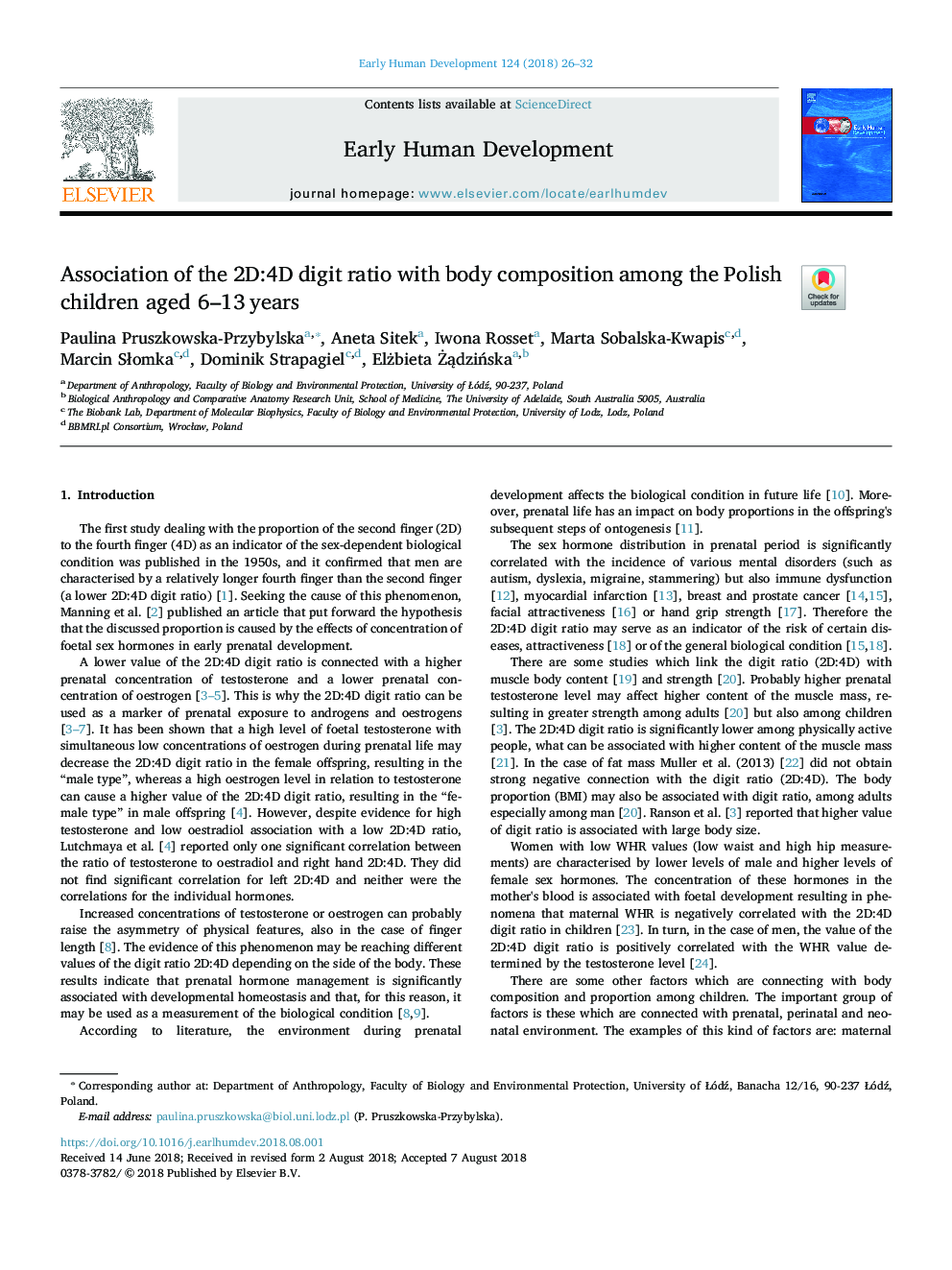| کد مقاله | کد نشریه | سال انتشار | مقاله انگلیسی | نسخه تمام متن |
|---|---|---|---|---|
| 8777580 | 1599443 | 2018 | 7 صفحه PDF | دانلود رایگان |
عنوان انگلیسی مقاله ISI
Association of the 2D:4D digit ratio with body composition among the Polish children aged 6-13â¯years
دانلود مقاله + سفارش ترجمه
دانلود مقاله ISI انگلیسی
رایگان برای ایرانیان
موضوعات مرتبط
علوم پزشکی و سلامت
پزشکی و دندانپزشکی
زنان، زایمان و بهداشت زنان
پیش نمایش صفحه اول مقاله

چکیده انگلیسی
The 2D:4D digit ratio is formed as a result of genetic factors but also prenatal exposure to sex hormones. The higher index value the higher concentration of the prenatal oestrogen. It is commonly known that testosterone is a hormone connected with muscle mass growth and that oestrogen affects adipogenesis. The aim of this study was to find if the digit ratio can be an informative indicator of the fat mass and muscle mass and body proportions in prepubertal children. Material and methods The analysed cohort included 420 children (221 girls and 199 boys) aged 6-13â¯years. Pearson's and Spearman's tests were conducted to assess whether 2D:4D was significantly correlated with the body composition measurements. Multiple regression models and stepwise forward regression were applied to select the most important independent variables affecting fat mass (%) and muscle mass (%) as well as the BMI and the WHR. Results The study shows that the digit ratio is negatively correlated with muscle mass (MM%) among girls (pâ¯<â¯0.05).There was no similar relationship in the group of boys. The regression models showed a significant role in determining the body composition and body proportions played by maternal factors such as: maternal level of education and weight gain during pregnancy. Conclusions The 2D:4D digit ratio seems to be an informative indicator of the muscle mass development since girls' early childhood. Moreover, maternal environment is also important in forming the offspring's body composition and proportions.
ناشر
Database: Elsevier - ScienceDirect (ساینس دایرکت)
Journal: Early Human Development - Volume 124, September 2018, Pages 26-32
Journal: Early Human Development - Volume 124, September 2018, Pages 26-32
نویسندگان
Paulina Pruszkowska-Przybylska, Aneta Sitek, Iwona Rosset, Marta Sobalska-Kwapis, Marcin SÅomka, Dominik Strapagiel, Elżbieta Å»Ä
dziÅska,